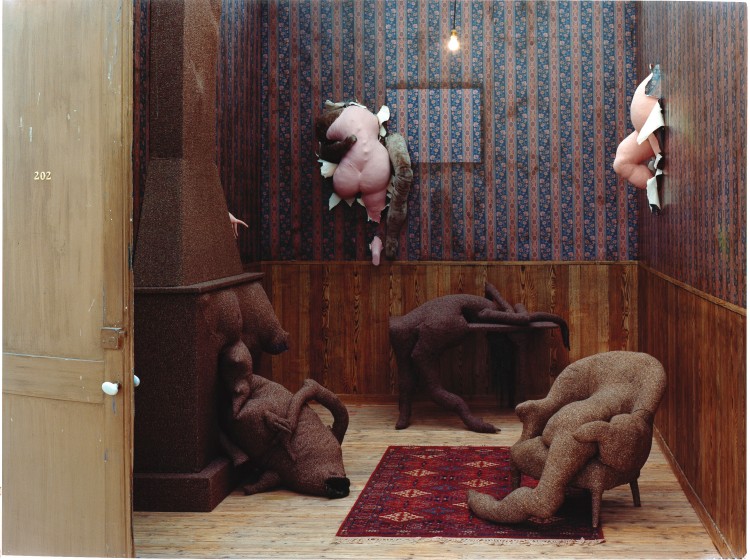In her own words...
Monique Levi-Strauss: Lots of designers sketch or draw their ideas, but not all of them could execute their projects. It requires a deep knowledge of cutting and sewing. Do you carry out such steps for the finished project yourself?
Dorothea Tanning: Of course, I cut and sew everything I can find that’s susceptible to transformation. But that’s the constant of any artist, it seems to me, especially if the artist has elected cloth as a material in his most serious and most challenging effort.
ML-S: Then this brings us to your cloth, or as some call them, soft sculptures. Knowing that you create them from start to finish I’d like to ask you what they mean to you, how they fit into the context of your work as a painter.
DT: These sculptures represent for me two or three kinds of triumph:
1. the triumph of cloth as a material for high purpose,
2. the triumph of softness over hardness—for how can a hard sculpture have the tactile voluptuousness of a soft one,
3. and the triumph of the artist over his volatile material, in this case living cloth.
There is another smaller triumph—that of defining the real meaning of la haute couture—for la haute couture should mean, a priori, the invention and execution of an object which could not be made or invented by anyone else. It should, like high anything, be a unique and primal object.
ML-S: How did you come to make soft sculptures?
DT: I came to this medium while listening to a concert of an avant-garde composer. I was in a state of elation, hearing the inventions he had devised for the ear. It seemed to me then that I should invent more daringly myself, and I naturally thought of woven material as a means; naturally, because I have always felt its innate beauty and magnetism and above all its possibilities.
ML-S: Do these sculptures take precedence over your painting?
DT: Not at all. I feel they are parallel expressions of the same preoccupations.
That is, the sculptures bring into a three-dimensional reality the visions which have all my life lived their two-dimensional lives on canvas. By the way, the paintings are my first love. Their rounder counterparts came later.
–from interview with Monique Levi-Strauss, “Dorothea Tanning: Soft Sculptures,” American Fabrics and Fashions 108 (Fall 1976), p. 69.


